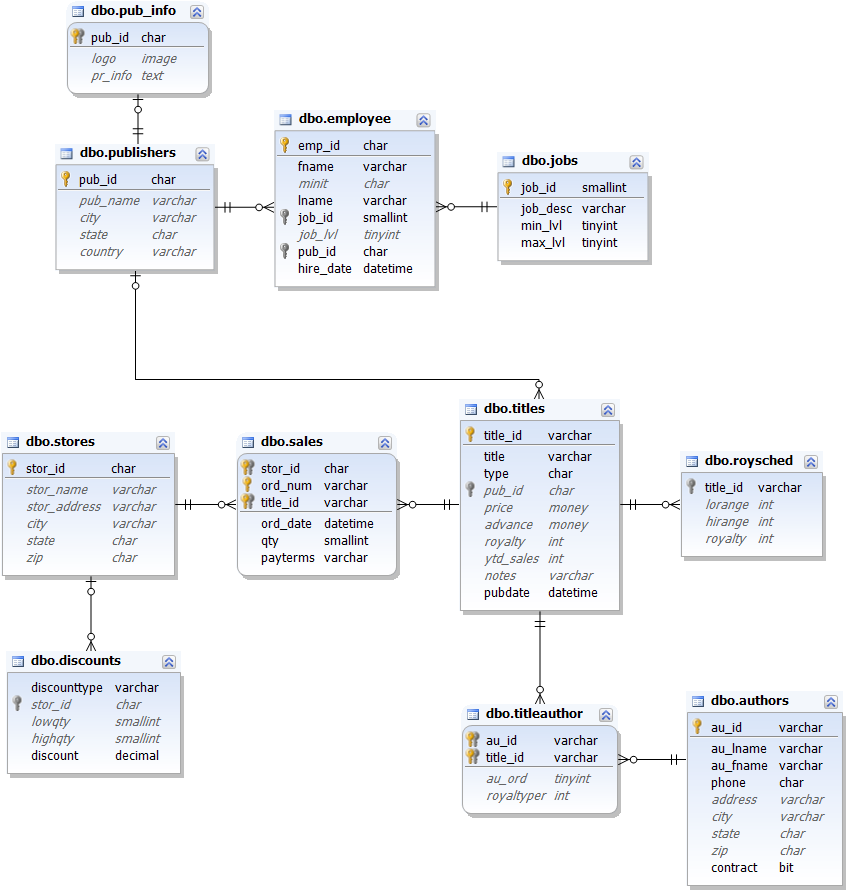The hall of fame would not be complete if I did not mention the Pubs (http://www.microsoft.com/en-us/download/details.aspx?id=23654) sample database. If sales are not good enough for you, then publishing is the right choice. Here you can find authors, titles, publishers, and other entities regarding a publishing business:

Figure 5-2. Pubs database relational schema
Objects and table attribute names are a less clear, because the author of this database sample has preferred the use of short words, qty, au_lname, highqty, and so on. However, with 11 tables it is quite simple and easy to understand.
You can download this sample at http://www.microsoft.com/en-us/download/details.aspx?id=23654. Pubs originated from Accent SQL Server 2000, but it can be used for practicing SQL and DBA tasks.
In Chapter 7, Backup Operations, we will learn how to restore those databases. If you are eager you can jump quickly to Chapter 8, User Management, and study how to do it.



